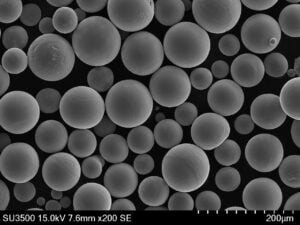Lightweight Aircraft Door Hinges
Оглавление
Introduction – The Critical Role of Lightweight Aircraft Door Hinges
In the demanding realm of aerospace engineering, every component’s weight and performance are under constant scrutiny. Aircraft door hinges, though seemingly small, play a crucial role in the safety and functionality of aircraft doors. The need for lightweight yet robust hinges has driven innovation in materials and manufacturing processes. Traditional manufacturing methods often involve complex assemblies and material wastage. However, the advent of metal 3D printing, also known as metal additive manufacturing, presents a paradigm shift in how these critical parts are designed and produced. This blog post delves into the advantages of utilizing metal 3D-печать for creating lightweight aircraft door hinges, the key materials involved, and what engineers and procurement managers in the aerospace industry need to consider. At Metal3DP, we are at the forefront of this revolution, providing cutting-edge additive manufacturing solutions tailored to the stringent requirements of the aerospace sector. Our industry-leading print volume, accuracy, and reliability ensure that mission-critical parts like aircraft door hinges meet the highest standards.
What are Lightweight Aircraft Door Hinges Used For? – Applications and Industries
Lightweight aircraft door hinges are integral components in various types of aircraft, from commercial airliners and private jets to helicopters and military aircraft. Their primary function is to provide a robust and reliable pivot point for aircraft doors, allowing for smooth operation during opening and closing. These hinges must withstand significant stresses during flight, ground operations, and emergency situations.
Key Applications Include:
- Passenger Doors: Ensuring secure and easy access for passengers and crew.
- Cargo Doors: Facilitating the loading and unloading of goods and equipment.
- Emergency Exit Doors: Providing quick and reliable egress during emergencies.
- Landing Gear Doors: Enabling the deployment and retraction of landing gear systems.
- Access Panels: Allowing maintenance personnel to access critical aircraft systems.
The aerospace industry demands components that not only meet stringent safety standards but also contribute to overall aircraft efficiency through weight reduction. Lighter aircraft consume less fuel, leading to lower operational costs and reduced environmental impact. This is where the significance of “lightweight” in aircraft door hinges becomes paramount. By adopting advanced materials and manufacturing techniques like metal 3D printing, manufacturers can achieve significant weight savings without compromising the structural integrity and performance of these critical components. Metal3DP understands these demands and offers solutions that cater specifically to the aerospace sector. You can learn more about our expertise in metal 3D printing for aerospace applications on our 3D-печать по металлу страница.

Why Use Metal 3D Printing for Lightweight Aircraft Door Hinges? – Advantages Over Traditional Manufacturing
Metal 3D printing offers several compelling advantages over traditional manufacturing methods for producing lightweight aircraft door hinges:
- Weight Optimization through Design Freedom: Additive manufacturing allows for the creation of complex geometries that are difficult or impossible to achieve with traditional methods like machining or casting. Engineers can design hinges with optimized topology, removing unnecessary material while maintaining structural integrity. This results in significant weight reduction, a critical factor in aerospace.
- Эффективность материала: Traditional subtractive manufacturing processes often involve removing large amounts of material, leading to significant waste. Metal 3D printing, on the other hand, builds parts layer by layer, using only the material needed for the component. This reduces material waste and lowers overall costs, especially for expensive aerospace-grade alloys.
- Customization and Complexity: Each aircraft can have unique door hinge requirements. Metal 3D printing enables the production of customized hinge designs without the need for expensive tooling or molds. Complex features, such as internal lattices or integrated functionalities, can be incorporated directly into the design.
- Reduced Assembly: 3D printing allows for the consolidation of multiple parts into a single component. For example, a traditional hinge assembly might consist of several individual parts that need to be manufactured separately and then assembled. With 3D printing, a single, integrated hinge can be produced, reducing assembly time, costs, and potential points of failure.
- Быстрое создание прототипов и итерации: Metal 3D printing significantly accelerates the prototyping process. Engineers can quickly iterate on designs, print prototypes, and test them, leading to faster development cycles and improved product performance. This agility is crucial in the fast-paced aerospace industry.
- Производство по требованию: Additive manufacturing facilitates on-demand production, reducing the need for large inventories of spare parts. This is particularly beneficial for the aerospace industry, where maintaining a stock of parts for various aircraft models can be costly.
Metal3DP’s advanced Selective Electron Beam Melting (SEBM) printers are ideally suited for producing complex and lightweight aerospace components like door hinges with high precision and material integrity. Our commitment to innovation in metal additive manufacturing empowers aerospace companies to achieve new levels of efficiency and performance. You can explore our range of способы печати to understand how our technologies can benefit your applications.
Recommended Materials and Why They Matter – AlSi10Mg and Scalmalloy®
The choice of material is paramount in the production of aircraft door hinges, as these components must exhibit high strength-to-weight ratio, corrosion resistance, and durability under extreme conditions. Metal 3D printing offers the flexibility to utilize advanced aerospace-grade alloys. For lightweight aircraft door hinges, two particularly promising materials are AlSi10Mg and Scalmalloy®.
AlSi10Mg:
- Состав: Aluminum (Al) alloyed with Silicon (Si) and Magnesium (Mg).
- Основные свойства:
- Легкий вес: Aluminum alloys are inherently lightweight, contributing to overall weight reduction in aircraft.
- Высокое соотношение прочности и веса: AlSi10Mg offers a good balance of strength and weight, making it suitable for structural components.
- Отличная теплопроводность: This property is beneficial for heat dissipation in certain applications.
- Хорошая коррозионная стойкость: The alloy exhibits good resistance to atmospheric corrosion, crucial for aerospace environments.
- Weldability and Machinability: AlSi10Mg can be post-processed through welding and machining if required.
- Why it Matters for Aircraft Hinges: Its lightweight nature and adequate strength make it an excellent candidate for non-critical or secondary structural components like door hinges, contributing to fuel efficiency without compromising functionality.
Scalmalloy®:
- Состав: A high-performance aluminum-magnesium-scandium alloy (Al-Mg-Sc).
- Основные свойства:
- Ultra-High Strength: Scalmalloy® boasts significantly higher strength than conventional aluminum alloys, rivaling titanium in some aspects.
- Extremely Lightweight: Despite its high strength, it remains a lightweight material, offering an exceptional strength-to-weight ratio.
- Excellent Ductility and Toughness: It exhibits good resistance to fracture and fatigue, crucial for safety-critical aerospace components.
- Хорошая коррозионная стойкость: Similar to other aluminum alloys, it offers good resistance to corrosion.
- Why it Matters for Aircraft Hinges: For aircraft door hinges that require maximum strength and minimal weight, especially in primary or high-stress applications, Scalmalloy® is an ideal choice. Its superior mechanical properties ensure durability and reliability while contributing significantly to weight savings.
Metal3DP offers a comprehensive range of high-quality metal powders, including AlSi10Mg and Scalmalloy®, specifically optimized for additive manufacturing processes. Our advanced powder making system ensures high sphericity and flowability, resulting in dense, high-performance 3D printed parts. You can explore our selection of продукты to find the ideal material for your aerospace applications.
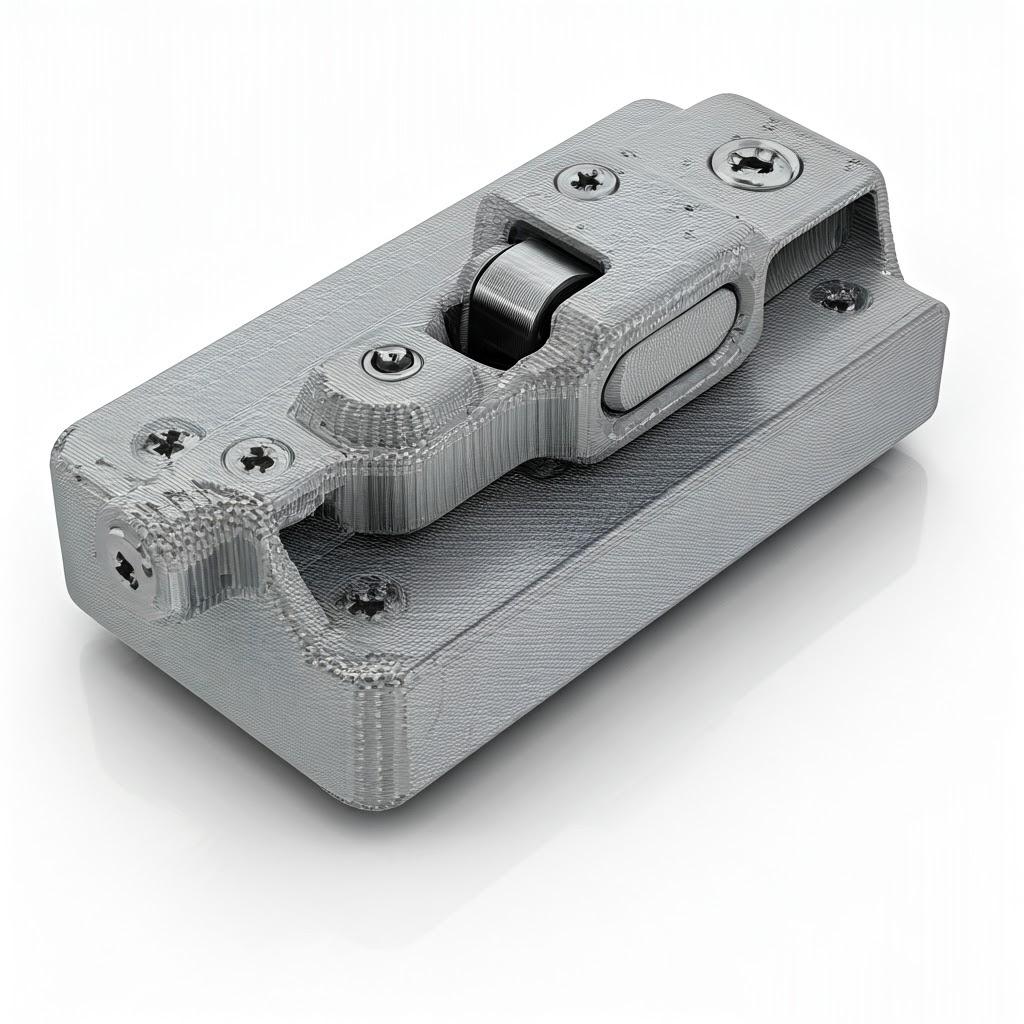
Design Considerations for Additive Manufacturing of Aircraft Hinges
Designing aircraft door hinges for metal 3D printing requires a different mindset compared to traditional manufacturing. To fully leverage the capabilities of additive manufacturing and achieve lightweight, high-performance components, engineers must consider several key design principles:
- Topology Optimization: This computational technique identifies areas of a design that are structurally critical and removes material from less stressed regions. For aircraft hinges, topology optimization can lead to organic, lightweight structures that maintain the required strength and stiffness while significantly reducing material usage.
- Решетчатые структуры: Incorporating internal lattice structures within the hinge can provide excellent strength-to-weight ratios. These intricate networks of interconnected struts offer support and rigidity while minimizing mass. Different lattice patterns can be chosen and customized based on the specific load requirements of the hinge.
- Консолидация частей: As mentioned earlier, 3D printing allows for the integration of multiple components into a single part. For aircraft hinges, this could mean designing a hinge with integrated mounting features or locking mechanisms, reducing the need for additional fasteners and simplifying assembly.
- Orientation and Support Structures: The orientation of the part during the printing process significantly impacts its strength, surface finish, and the need for support structures. Careful consideration of the build orientation can minimize support material, which needs to be removed post-printing, and optimize the mechanical properties in critical load-bearing directions.
- Wall Thickness and Feature Size: Minimum wall thicknesses and feature sizes are dictated by the chosen printing technology and material. Designing hinges with these limitations in mind ensures successful printing and the required structural integrity. Features like thin walls or small holes might require careful orientation and support to prevent deformation.
- Surface Finish Considerations: The as-printed surface finish of a metal 3D printed part can vary depending on the printing process and material. For aircraft hinges, where smooth operation and fit are important, designers may need to account for post-processing steps like machining or polishing in their design.
На сайте Metal3DP, our team of experienced engineers provides comprehensive design for additive manufacturing (DfAM) services. We work closely with our clients to optimize their designs for metal 3D printing, ensuring lightweighting, functionality, and manufacturability. Our expertise in materials and printing processes allows us to guide you in creating innovative and efficient aircraft components.
Tolerance, Surface Finish, and Dimensional Accuracy in 3D Printed Hinges
Achieving the required tolerance, surface finish, and dimensional accuracy is crucial for aircraft door hinges to ensure proper fit, function, and safety. Metal 3D printing technologies have made significant advancements in these areas, but understanding the capabilities and limitations is essential:
- Tolerance: The achievable tolerance in metal 3D printing depends on the printing technology, material, and part geometry. Selective Laser Melting (SLM) and Electron Beam Melting (EBM), the core technologies at Metal3DP, can achieve relatively tight tolerances, typically in the range of ±0.1 to ±0.2 mm for critical dimensions. However, larger parts or complex geometries may exhibit slightly wider tolerances. Design features that require very tight tolerances might necessitate post-processing like CNC machining.
- Отделка поверхности: The as-printed surface finish in metal 3D printing is generally rougher compared to machined surfaces. The surface roughness (Ra) can range from 5 to 20 µm depending on the process and powder particle size. For aircraft hinges, smoother surfaces might be required for aesthetic reasons, to reduce friction, or to improve corrosion resistance. Post-processing techniques like polishing, grinding, or shot peening can be employed to achieve the desired surface finish.
- Точность размеров: Dimensional accuracy refers to how closely the printed part matches the intended design dimensions. Factors affecting accuracy include material shrinkage during solidification, thermal gradients during printing, and the calibration of the 3D printer. Metal3DP’s state-of-the-art printers are calibrated meticulously to ensure high dimensional accuracy. Furthermore, our expertise in material behavior allows us to compensate for potential shrinkage during the design and printing process.
Metal3DP provides comprehensive post-processing services to meet the specific tolerance and surface finish requirements of aerospace components. Our quality control processes ensure that all printed parts meet the stringent dimensional accuracy standards demanded by the aerospace industry.
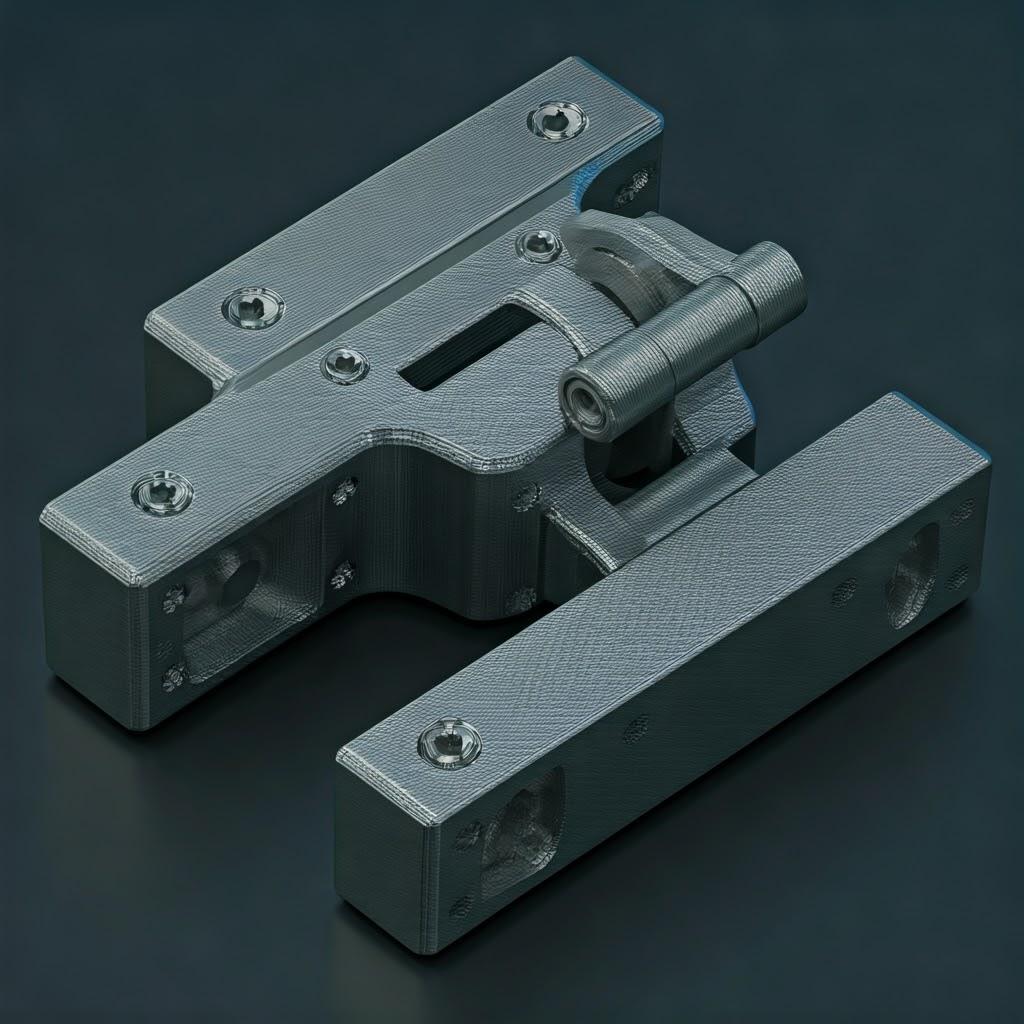
Post-Processing Requirements for Aircraft-Grade Hinges
While metal 3D printing offers significant advantages, post-processing is often necessary to achieve the final properties and finish required for aircraft-grade door hinges. Common post-processing steps include:
- Удаление опоры: Support structures are often required during the printing process to prevent part deformation and ensure proper overhangs. These supports need to be carefully removed after printing, which can be a manual or automated process depending on the geometry and material.
- Stress Relief Heat Treatment: Metal 3D printed parts can have residual stresses due to the rapid heating and cooling cycles during the printing process. Stress relief heat treatment helps to reduce these internal stresses, improving the mechanical properties and dimensional stability of the hinges.
- Горячее изостатическое прессование (HIP): HIP involves subjecting the printed part to high pressure and temperature in an inert gas environment. This process helps to close any internal porosity, increasing the density and improving the fatigue strength and overall mechanical performance, which is critical for aerospace applications.
- CNC Machining: For features requiring very tight tolerances or specific surface finishes that cannot be achieved directly through 3D printing, CNC machining can be used as a secondary process. This can include machining holes, threads, or critical mating surfaces.
- Отделка поверхности: As mentioned earlier, various surface finishing techniques like polishing, grinding, shot peening, or abrasive flow machining can be used to achieve the desired surface roughness and improve the aesthetic appearance and performance of the hinges.
- Coatings and Surface Treatments: Depending on the application and environmental conditions, aircraft door hinges may require specific coatings or surface treatments to enhance corrosion resistance, wear resistance, or other properties. Examples include anodizing for aluminum alloys or passivation for stainless steels.
- Неразрушающий контроль (NDT): To ensure the integrity and quality of the printed hinges, NDT methods like ultrasonic testing, dye penetrant inspection, or radiographic testing may be employed to detect any internal flaws or surface defects.
Metal3DP offers a complete suite of post-processing services tailored to the requirements of aerospace components. Our expertise in heat treatment, machining, surface finishing, and NDT ensures that the final printed hinges meet the highest quality and performance standards.
Common Challenges and How to Avoid Them in 3D Printing Aircraft Components
While metal 3D printing offers numerous benefits, there are also potential challenges that need to be addressed to ensure the successful production of high-quality aircraft components like door hinges:
- Warping and Distortion: Thermal stresses during the printing process can lead to warping or distortion of the part, especially for large or complex geometries. Mitigation: Optimizing part orientation, using appropriate support structures, and controlling the build chamber temperature can help minimize these issues. Simulation software can also predict and compensate for potential distortion.
- Пористость: Internal voids or pores can occur in 3D printed parts, which can reduce their strength and fatigue life. Mitigation: Optimizing printing parameters such as laser power, scan speed, and powder layer thickness, as well as employing post-processing techniques like HIP, can significantly reduce porosity. Metal3DP’s advanced powder handling and printing systems are designed to minimize porosity.
- Support Structure Removal Issues: Removing support structures can sometimes be challenging, especially for intricate geometries, and can leave surface marks. Mitigation: Designing self-supporting geometries where possible, optimizing support structure design for easy removal, and employing specialized support removal techniques can alleviate these issues.
- Material Property Variability: The mechanical properties of 3D printed parts can sometimes vary depending on the build orientation and location within the build volume. Mitigation: Thorough material characterization, process optimization, and strict quality control measures are essential to ensure consistent and reliable material properties. Metal3DP’s high-quality metal powders and controlled printing processes contribute to consistent material properties.
- Surface Finish Limitations: Achieving a smooth surface finish directly from the printing process can be challenging. Mitigation: Incorporating design features that minimize the need for smooth surfaces in non-critical areas and employing appropriate post-processing techniques can address this limitation.
- Cost and Scalability: While metal 3D printing can be cost-effective for low to medium volumes and complex parts, the cost per part can be higher than traditional methods for very high volumes. Scalability can also be a challenge. Mitigation: Optimizing designs for efficient printing, exploring high-throughput printing technologies like those offered by Metal3DP, and carefully analyzing the overall production volume requirements are crucial for cost-effectiveness and scalability.
By understanding these common challenges and implementing appropriate mitigation strategies, aerospace manufacturers can effectively leverage the benefits of metal 3D printing for producing high-performance aircraft door hinges and other critical components.
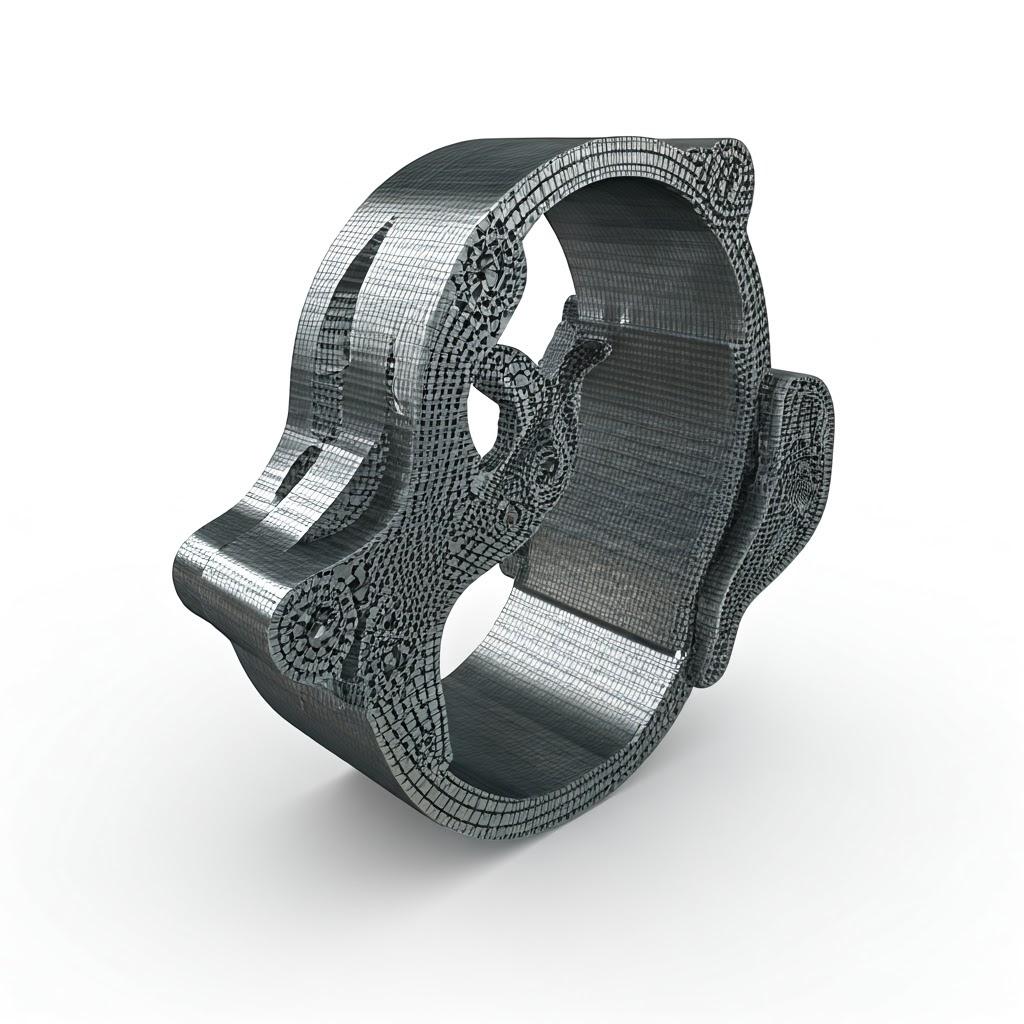
How to Choose the Right Metal 3D Printing Service Provider for Aerospace Parts
Selecting the right metal 3D printing service provider is a critical decision for aerospace companies looking to manufacture lightweight aircraft door hinges or other high-performance components. The chosen provider should possess the expertise, certifications, and capabilities to meet the stringent demands of the aerospace industry. Here are key factors to consider:
- Aerospace Certifications and Standards: Ensure the provider holds relevant aerospace certifications such as AS9100 or Nadcap. These certifications demonstrate a commitment to quality management systems and process controls required for aerospace manufacturing. Metal3DP adheres to strict quality standards and is working towards relevant aerospace certifications to ensure the highest level of reliability for our customers.
- Material Capabilities: Verify that the provider has experience processing the specific aerospace-grade alloys required for your application, such as AlSi10Mg and Scalmalloy®. They should also have a thorough understanding of the material properties and processing parameters for these materials. Metal3DP offers a wide range of high-performance metal powders, including those ideal for lightweight aerospace applications.
- Printing Technology and Equipment: Assess the provider’s printing technology and equipment. Do they utilize advanced machines capable of achieving the required precision, surface finish, and material density? Metal3DP employs state-of-the-art Selective Electron Beam Melting (SEBM) printers known for their accuracy and reliability in producing complex metal parts.
- Design for Additive Manufacturing (DfAM) Expertise: A knowledgeable service provider should offer DfAM support to help optimize your designs for metal 3D printing, ensuring lightweighting, functionality, and manufacturability. Metal3DP’s experienced engineering team provides comprehensive DfAM services.
- Post-Processing Capabilities: Determine if the provider offers the necessary post-processing services, such as support removal, heat treatment, HIP, CNC machining, and surface finishing, to meet the final specifications of your parts. Metal3DP has a network of trusted partners to provide a full suite of post-processing solutions.
- Quality Control and Inspection: Inquire about the provider’s quality control processes and inspection methods. They should have robust procedures in place to ensure dimensional accuracy, material integrity, and overall part quality.
- Lead Times and Scalability: Discuss lead times for prototyping and production, as well as the provider’s capacity to handle your anticipated production volumes. Metal3DP is committed to efficient production and offers scalable solutions to meet your manufacturing needs.
- Communication and Support: Evaluate the provider’s communication processes and technical support. A responsive and collaborative partner is crucial for a successful project. Metal3DP prides itself on its customer-centric approach and provides dedicated support throughout the entire process.
By carefully evaluating these factors, you can choose a metal 3D printing service provider like Metal3DP that can reliably produce high-quality, lightweight aircraft door hinges that meet your specific requirements.
Cost Factors and Lead Time for 3D Printed Aircraft Door Hinges
The cost and lead time for producing aircraft door hinges using metal 3D printing are influenced by several factors:
Факторы стоимости:
- Материальные затраты: The cost of the metal powder (e.g., AlSi10Mg, Scalmalloy®) is a significant factor. Aerospace-grade alloys can be more expensive than standard metals.
- Build Volume and Part Size: Larger parts that occupy more build volume and require longer print times will generally cost more.
- Complexity of Design: Intricate geometries, thin walls, and the need for extensive support structures can increase printing time and material usage, thus affecting the cost.
- Требования к постобработке: The extent of post-processing needed (e.g., support removal, heat treatment, machining, surface finishing) will add to the overall cost.
- Quantity and Production Volume: While 3D printing can be cost-effective for low to medium volumes, the cost per part may decrease with larger production runs due to economies of scale.
- Machine Time and Energy Consumption: The duration of the printing process and the energy consumed by the 3D printer contribute to the overall cost.
- Quality Control and Inspection: Stringent quality control procedures and non-destructive testing can add to the cost but are essential for aerospace applications.
Lead Time Factors:
- Design and Engineering: The time required for design optimization and preparation for 3D printing.
- Время печати: The actual duration of the 3D printing process, which depends on the part size, complexity, and material.
- Post-Processing Time: The time needed for support removal, heat treatment, machining, surface finishing, and other post-processing steps.
- Quality Control and Inspection: The time required for thorough quality checks and testing.
- Shipping and Logistics: The time for final part delivery.
Metal3DP is committed to providing transparent and competitive pricing for our metal 3D printing services. We work closely with our clients to optimize designs and production processes to achieve cost-effective solutions with efficient lead times. Contact us to discuss your specific requirements and receive a detailed quotation.
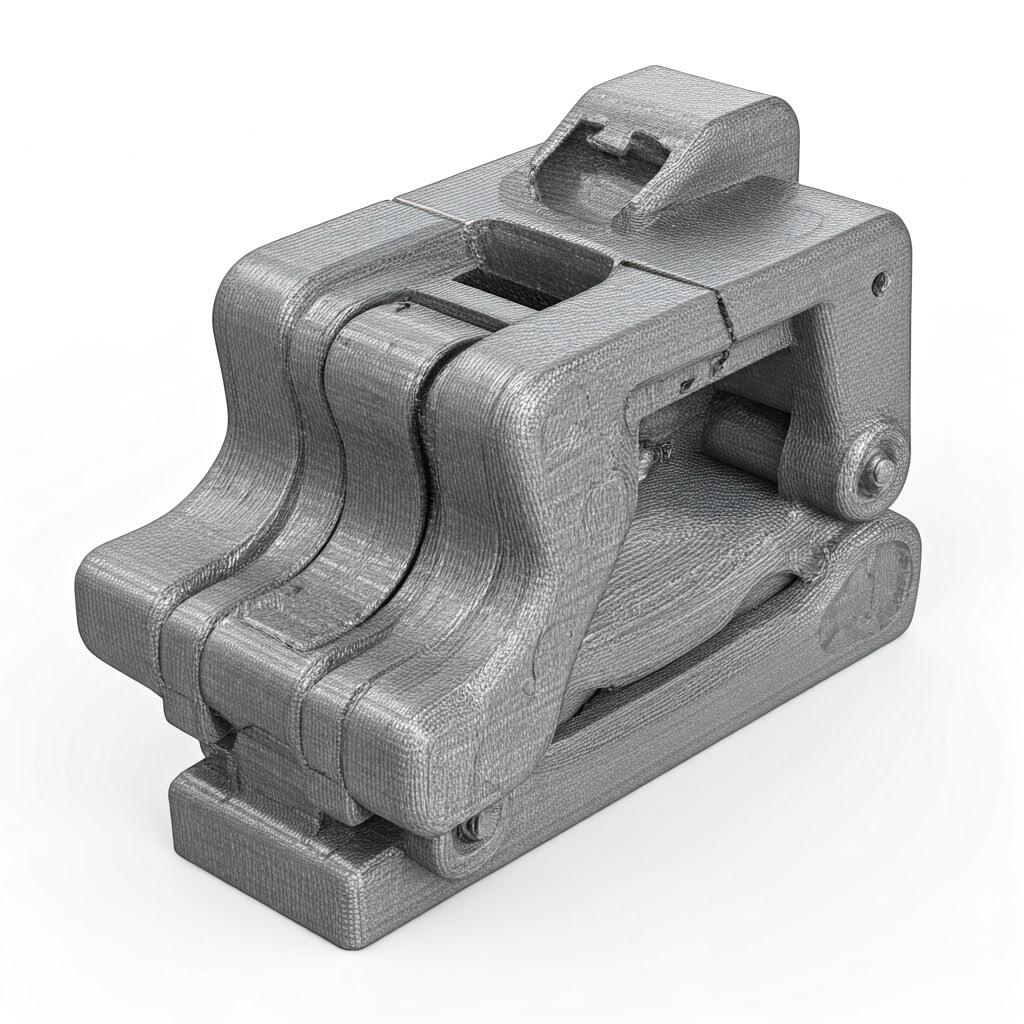
Часто задаваемые вопросы (FAQ)
- Q: Is metal 3D printing strong enough for aircraft door hinges? A: Yes, with the right materials and optimized designs, metal 3D printing can produce aircraft door hinges with excellent strength-to-weight ratios and durability, meeting the demanding requirements of the aerospace industry. Materials like Scalmalloy® offer exceptional strength properties.
- Q: What are the typical tolerances achievable with metal 3D printing for aerospace parts? A: Depending on the printing technology and part geometry, tolerances of ±0.1 to ±0.2 mm are achievable. For critical dimensions requiring tighter tolerances, post-processing like CNC machining can be employed.
- Q: Can metal 3D printed parts be certified for aerospace applications? A: Yes, provided that the manufacturing processes, materials, and quality control procedures meet the stringent aerospace standards and regulations. Choosing a certified provider like Metal3DP, which adheres to high quality standards and is working towards aerospace certifications, is crucial.
Conclusion – The Future of Aircraft Door Hinges with Metal 3D Printing
Metal 3D printing is revolutionizing the design and manufacturing of lightweight aircraft door hinges. The ability to create complex geometries, optimize designs for weight reduction, utilize advanced materials like AlSi10Mg and Scalmalloy®, and consolidate parts offers significant advantages over traditional manufacturing methods. As the aerospace industry continues to prioritize fuel efficiency, performance, and customization, metal additive manufacturing will play an increasingly vital role in producing critical components.
Metal3DP is at the forefront of this transformative technology, providing cutting-edge SEBM printing solutions, high-quality metal powders, and comprehensive application development services. Our commitment to innovation, quality, and customer satisfaction makes us a trusted partner for aerospace companies looking to embrace the future of manufacturing. Contact Metal3DP today to explore how our capabilities can power your organization’s additive manufacturing goals and learn more about our solutions on our домашняя страница.
Поделиться
MET3DP Technology Co., LTD - ведущий поставщик решений для аддитивного производства со штаб-квартирой в Циндао, Китай. Наша компания специализируется на производстве оборудования для 3D-печати и высокопроизводительных металлических порошков для промышленного применения.
Сделайте запрос, чтобы получить лучшую цену и индивидуальное решение для вашего бизнеса!
Похожие статьи

Высокопроизводительные сегменты сопловых лопаток: Революция в эффективности турбин с помощью 3D-печати металла
Читать далее "
3D-печатные крепления для автомобильных радарных датчиков: Точность и производительность
Читать далее "О компании Met3DP
Последние обновления
Наш продукт
CONTACT US
Есть вопросы? Отправьте нам сообщение прямо сейчас! После получения Вашего сообщения мы всей командой выполним Ваш запрос.
Получите информацию о Metal3DP
Брошюра о продукции
Получить последние продукты и прайс-лист

Металлические порошки для 3D-печати и аддитивного производства
КОМПАНИЯ
ПРОДУКТ
ИНФОРМАЦИЯ О КОНТАКТЕ
- Город Циндао, Шаньдун, Китай
- [email protected]
- [email protected]
- +86 19116340731







